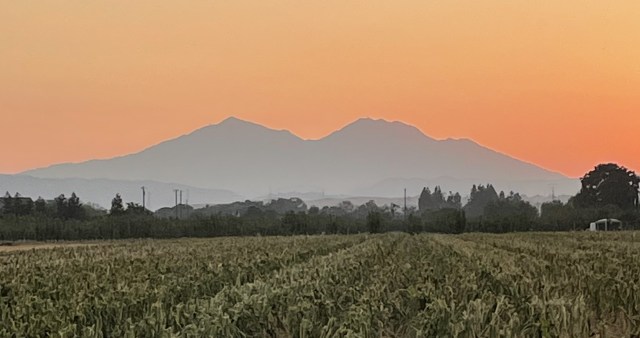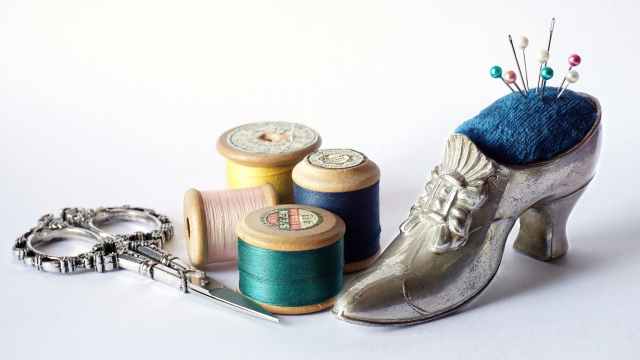Your cart is currently empty!
Alcohol
Alcohol How satisfying would it be to, after a hard day’s work, sit down to a truly homemade alcoholic beverage? Honestly, I wouldn’t know! I have tried to make wine two times. The first time my plum wine ended up tasting like apple cider. The second time was lemon and it was a sweet (way…
Alcohol
How satisfying would it be to, after a hard day’s work, sit down to a truly homemade alcoholic beverage? Honestly, I wouldn’t know! I have tried to make wine two times. The first time my plum wine ended up tasting like apple cider. The second time was lemon and it was a sweet (way too sweet for me) syrup like substance that really packed a punch. I gave up … not permanently but because I saw some pretty lights (I perpetually have A.D.D. … going from one tangent/subject to another, which explains why it has taken me this long to finally start working on my website). I have always wanted to be successful at it. Ever since the first time I saw “Arsenic and Old Lace” my dream has been to make elderberry wine. I might still, if I find a good supply of elderberries and can keep my attention focused long enough! There were many members of my now disbanded Yahoo group that were actually successful at it and they shared many recipes over the years.
Now, onto the recipes!
Brenda Nolen
~~~~~~~~~~~~~~~~~~~~~~~~~~~~~~~~
Aunt Cecelia Simm’s Peach Brandy
(Miriam’s comment: I took this recipe and used it in its original form; I’ve also made plum/black grape brandy, apricot brandy, and nectarine brandy from it. Delicious, and **strong**.)
- 4 1/2 lbs. sugar
- 1 1/2 lbs. seedless grapes
- 1/2 lb. cornmeal
- 4 qt. lukewarm water
- 1 qt. peaches, mashed well
- 2 cakes yeast
Mix all together. Let stand 7 days. Stir every day. Strain; let stand 4 days, then bottle.
~~~~~~~~~~~~~~~~~~~~~~~~~~~~~~~~
Brambleberry Cordial
Can be made with blackberries, raspberries, etc. Based on one of Billy Joe Tatum’s recipes, but with several adaptations of my own.
- 2 quarts fresh or frozen brambleberries
- 2 cups boiling water
- 2 cups sugar
If using frozen berries, let thaw before proceeding. Crush the berries with a potato masher or the bottom of a wine bottle. Add boiling water. Stir. Cover with clean cloth (I use a dish towel) and let sit in a warm place for 24 hours.
Push through a sieve or through the small-holed blade of a food mill to remove most of the seeds. Stir in the sugar. Cover with cloth. Stir again every 15 minutes for one hour (five times total). Strain through a damp jelly bag or several layers of damp cheesecloth. Pour into clean glass bottles. Cover with coffee paper filters or cloth secured with rubber bands. Leave in a cool dark place.
Check in after a month and see if there is still a foam on top (a sign that fermentation is still in process). When fermentation ceases (may take up to two months with this recipe – and yes, I blew up a few bottles before I figured this out!), remove rubber band and paper or cloth and cap with cork or better yet a screw on top. Wait a total of four months from the date you first strained and bottled the cordial. Decant before serving (I pour it into glass pyrex measuring cups and wait until the bubbles stop rising, then repour it back into the bottles and cap). Deep red or purple in color and indescribably delicious, this cordial makes a wonderful gift (if you can bear to part with it!).
Leda Meredith
~~~~~~~~~~~~~~~~~~~~~~~~~~~~~~~~
Chickweed Wine
Source: The Winemaking Homepage
- 1 qt chickweed
- 2-1/2 lbs granulated sugar
- 1 orange
- 1 lemon
- 1 tsp yeast nutrient
- water to make 1 gallon
- wine yeast
The whole plant, except the roots, is used in the wine. Bring 1 gallon water to boil. Meanwhile, wash the chickweed and thinly peel the orange and lemon. Add the peelings to the chickweed in a primary. Pour boiling water over them and allow to cool. Strain the liquid back into the primary and discard the chickweed and peelings. Add sugar and juice of the citrus and stir well to dissolve. Add remaining ingredients and cover with clean cloth. Ferment 7 days, then pour into secondary and fit airlock. Rack every 30 days into sanitized secondary until wine clears and no further sediments are dropped during a 30-day period. Stabilize, sweeten if desired and rack into bottles. This wine will not be remarkable until aged at least one year. Two years is better. [Recipe adapted from Steven A. Krause’s Wines from the Wilds]
~~~~~~~~~~~~~~~~~~~~~~~~~~~~~~~~
Clover Wine
- 8 qts wilted and dried clover blossoms
- 4 qts boiling water
- 8 cups cane sugar
- 3 lemons cut into 1/4″ slices
- 3 oranges cut into 1/4″ slices
- 1/4 lb candied ginger, finely chopped
- 1 package dry granulated yeast
Put the clover blossoms into the canner kettle; then pour the boiling water over them. Put the kettle over a low flame and simmer slowly for two hours.
Set aside to cool to lukewarm, then strain through a jelly bag, squeezing well so that all the liquid is extracted. Return liquid to canner kettle, then stir in the sugar, making sure all is dissolved. Add the sliced lemons and oranges and the candid ginger. Sprinkle the dry yeast over the surface. Put in a warm place to ferment for 2 weeks. After the second day of fermentation, stir well. Thereafter, it is necessary to stir twice a week only. After this two week fermentation period, strain through several thickness of cheesecloth. Then return to the canner kettle to settle for two days more. Siphon off into clean sterilized bottles and cork lightly. This wine goes through quite a gay period in the bottle, so be very careful not to cork it too early. When there are no more signs of bubbles on the sides of the bottle, fasten the corks tightly and seal with paraffin. Keep for at least three months.
~~~~~~~~~~~~~~~~~~~~~~~~~~~~~~~~
Cowslip Mead
Here’s a recipe I remember my Granddad making when he was alive ( he was a beekeeper and loved anything to do with honey)
Cowslip Mead
To every gallon of water allow 2lb of honey: and boil for 3/4 hour, skimming well. Take 1 pint of the liquor and slice into it a large lemon, then pour the remainder into a earthenware (or plastic) bowl and put in 1 gallon of cowslip heads (primula veris ). Stir well, cover, and set in a warm place for 24 hours.
Stir in the lemon liquor, and 1/4 oz. brewers yeast, dissolved in a little of the honey. Let it work for 4 days, then strain into cask (or a sealable dark plastic home-brew barrel). Keep in a cool place for 6 months, then bottle.
All the best
Darren gardening in UK – Different timezone, different planet.
~~~~~~~~~~~~~~~~~~~~~~~~~~~~~~~~
Dandelion Liqueur
How to make dandelion liqueur:
1) Prepare dried dandelion roots 10-30% amount of the container you wish to store the liqueur in.
2) Soak the roots in white liquor for 10 days. (Gin, Vodka, Tequila, and White Ram are also good)
3) Shake the container from time to time and mix the liquid well.
4) Drain and pour the liqueur in a new container.
5) Ripen for 3 months in a cool place (not in the refrigerator, though).
~~~~~~~~~~~~~~~~~~~~~~~~~~~~~~~~
Elderflower Wine
To make 4.8lt/8pts
- 600ml/1pt elderflowers picked of their stems and cleaned
- 4.8lt/8pts boiling water
- 1.575kg/3.5lb sugar
- juice and zest of 1 large lemon
- 15g/.5oz wine yeast
Place the elderflowers in a bowl and pour on the boiling water, cover and leave to steep for two days. Strain the liquid into a large saucepan, add the sugar and lemon juice and zest. Heat this over a low heat to dissolve the sugar. Remove and allow to cool. When lukewarm strain through a fine sieve into a sterilized fermentation jar. Sprinkle on the wine yeast, fit an airlock, and leave in a warm place the fermentation is complete. Siphon into sterilized bottles, cork and leave to mature for at least 6 months.
~~~~~~~~~~~~~~~~~~~~~~~~~~~~~~~~
Elderberry Wine
Hank Shaw is wonderful! If you have never been to his website, this is the perfect introductory post to read:
https://honest-food.net/elderberry-wine-recipe/
~~~~~~~~~~~~~~~~~~~~~~~~~~~~~~~~
Maple Wine
From “Valuable Secrets”, 1809
“Boil 4, 5, or 6 gallons of sap according to its strength into one and add yeast according to the quantity you make. After it is fermented, set it aside in a cool place well stopped. If kept for two years, it will become a pleasant and round wine.”
~~~~~~~~~~~~~~~~~~~~~~~~~~~~~~~~
Watermelon Wine
This is for one gallon of wine.
- 2 qts. watermelon juice
- 2 qts water
- 1 1/2 lb sugar
- 2 1/2 tsp acid blend
- 1/8 tsp tannin
- 1 tsp yeast nutrient
- 1 pkg wine yeast
Remove rind and cut melon into chunks. Put into nylon straining bag, mash and squeeze out juice into primary fermenter. Keep pulp in straining bag, tie off and place in primary. Stir in all other ingredients EXCEPT yeast. Cover and let sit 24 hours. After 24 hours, add yeast. Cover. Stir daily and check S.G.When SG is 1.040(3-5 days) lightly press juice from bag. Siphon wine off sediment into glass secondary fermenter. Attach airlock. When fermentation is complete(SG is 1.00-about 3 weeks) siphon off into clean secondary. Reattach lock. Siphon again in 2 months and again if necessary before bottling.
~~~~~~~~~~~~~~~~~~~~~~~~~~~~~~~~
Peppermint Liqueur
- 1 cup tightly packed peppermint leaves
- 4 cups vodka or brandy
- 2 cups sugar
Place the lightly bruised peppermint leaves and the vodka or brandy (I used vodka) in a large jar with a tight-fitting lid. Steep for 2 days, then add the sugar. Steep for 2 more weeks, shaking vigorously once or twice a day to dissolve the sugar, then strain and filter. Transfer the liqueur to bottles and age an additional 2 weeks before using.
~~~~~~~~~~~~~~~~~~~~~~~~~~~~~~~~
Lavender Margaritas
ORIGINAL SOURCE: Sunset Recipe Annual 2000.
- 3/4 to 1 cup tequila
- 1/3 to 1/2 cup blue curacao or other orange-flavor liqueur
- 3/4 to 1 cup canned coconut milk
- 1/4 to 1/3 cup lime juice
- 1-1/2 to 2 cups frozen unsweetened raspberries
- 1-1/2 to 2 cups frozen unsweetened blueberries
- 3 to 4 cups ice cubes
- 1 tablespoon sugar
- 1 teaspoon fresh or dried lavender blossoms
- Lavender sprigs, rinsed (optional)
In a blender, combine tequila, curacao, coconut milk and lime juice. Cover and turn to high speed, then gradually add raspberries, blueberries and ice. Whirl until margarita mixture is smooth and slushy. Put sugar and lavender blossoms in a small bowl. Rub with your fingers or mash with a spoon to release some of the lavender flavor. Rub glass rims with lime wedge to moisten. Dip rims in lavender sugar, coating evenly. Pour margaritas into sugar-rimmed glasses. Garnish with lavender sprigs.
~~~~~~~~~~~~~~~~~~~~~~~~~~~~~~~~





Leave a Reply